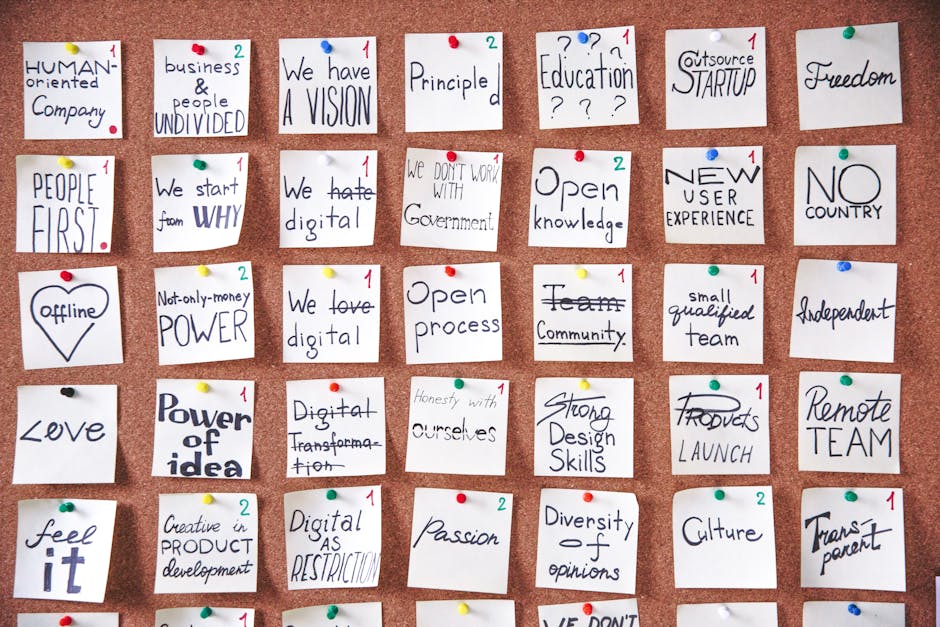As we navigate the complex business landscape of 2025, leadership trends are evolving rapidly to meet unprecedented challenges. The most successful organizations recognize that amid technological advancements and workplace transformations, the fundamental leadership trend for 2025 is mastering human connection. This shift represents a powerful counterbalance to increasing automation and digital transformation, highlighting that even as AI and technology reshape our work environments, the human element of leadership remains irreplaceable.
Organizations that thrive in 2025 will be those whose leaders excel at building meaningful connections while navigating technological change, fostering inclusive environments, and developing agile approaches to management. This comprehensive guide explores the critical leadership trends that forward-thinking executives and managers must embrace to drive innovation and organizational success in the coming year.
The Primacy of Human Connection in Leadership

Photo by RDNE Stock project on Pexels
In 2025, the most significant leadership trend is the renewed focus on human connection. As digital transformation accelerates and remote work becomes increasingly normalized, effective leaders understand that personal connections create the foundation for resilient, innovative teams capable of thriving in rapidly changing environments.
The everyday demands of leadership often push relationship-building to the background as executives focus on immediate deliverables and quarterly results. However, organizations that prioritize connection are seeing measurable benefits in employee retention, innovation capacity, and overall business performance. This isn’t merely about being personable—it’s about creating intentional structures and practices that foster genuine human relationships across organizational hierarchies.
Connection-focused leadership manifests in several key practices. First, it involves regular, meaningful one-on-one conversations that go beyond performance metrics to understand employees’ aspirations, challenges, and ideas. Second, it requires transparency in communication, particularly around organizational changes and strategic decisions. Third, it emphasizes recognition of contributions at all levels, acknowledging that feeling valued is fundamental to employee engagement.
Leaders who excel at connection also create psychological safety within their teams, encouraging risk-taking and honest feedback without fear of negative consequences. This approach transforms the traditionally isolated experience of leadership into a collaborative journey of shared growth and achievement, benefiting both the organization and individual team members.
Research indicates that connected leadership isn’t just good for morale—it directly impacts business outcomes. Teams with strong connections demonstrate greater resilience during challenging periods, higher rates of innovation, and more effective collaboration across functional boundaries. As we move through 2025, organizations that invest in developing their leaders’ connection capabilities will gain significant competitive advantages.
Tech-Savvy Leadership: Bridging Innovation and Implementation

Photo by Polina Zimmerman on Pexels
The digital transformation wave continues to reshape industries in 2025, requiring leaders who can effectively bridge technological innovation with practical implementation. Today’s successful executives must possess sufficient technical literacy to make informed decisions about emerging technologies while guiding their organizations through digital change initiatives.
By 2025, approximately 70% of organizations will implement structured automation to enhance operational flexibility and efficiency—a dramatic increase from just 20% in 2021. This rapid adoption creates both opportunities and challenges for leadership teams. Tech-savvy leaders distinguish themselves by understanding not just what technologies can do, but how they can be integrated into existing workflows to create meaningful improvements.
Effective technology leadership in 2025 requires several key competencies. First, leaders must develop a working knowledge of artificial intelligence, data analytics, and automation capabilities relevant to their industry. Second, they need to cultivate relationships with technical experts who can provide deeper insights into implementation challenges. Third, they must excel at translating technical concepts into business value for stakeholders across the organization.
Beyond technical knowledge, successful digital transformation leadership involves careful attention to change management. Leaders must address the human aspects of technological change, including skill development needs, workflow adjustments, and potential resistance to new systems. By approaching digital transformation as both a technical and human challenge, effective leaders create environments where technology enhances rather than disrupts employee experience.
Organizations with tech-savvy leadership teams are leveraging technology to optimize decision-making processes through data-driven insights. These leaders recognize that technology should serve strategic objectives rather than driving strategy itself. They maintain a balanced perspective that values technological innovation while remaining focused on core business outcomes and human needs.
Inclusive Leadership: Driving Innovation Through Diversity

Photo by Cedric Fauntleroy on Pexels
In 2025, inclusive leadership has evolved from a moral imperative to a recognized business advantage. Organizations with diverse leadership teams consistently outperform their less diverse counterparts, with research showing that companies in the top quartile for ethnic and cultural diversity on executive teams are 36% more likely to achieve above-average profitability compared to those in the bottom quartile.
Inclusive leadership goes beyond demographic representation to create environments where diverse perspectives are actively sought and valued in decision-making processes. This approach recognizes that innovation emerges from the collision of different viewpoints, experiences, and problem-solving approaches. Leaders who excel at inclusivity create psychological safety that encourages team members from all backgrounds to contribute their unique insights.
Effective inclusive leadership in 2025 involves several key practices. First, leaders must develop awareness of their own biases and how these might influence their decisions and interactions. Second, they need to implement structured approaches to gathering diverse input before making significant decisions. Third, they should establish clear metrics for measuring inclusion beyond simple demographic representation, looking at factors like psychological safety, participation rates in discussions, and career advancement patterns.
The 2023 Global Leadership Forecast by DDI revealed that only 15% of leaders feel adequately prepared to address employee burnout, highlighting the importance of inclusive approaches that consider diverse employee needs and circumstances. Inclusive leaders recognize that different team members face different challenges and require different types of support to perform at their best.
Organizations that prioritize inclusive leadership are better positioned to attract and retain top talent in the competitive 2025 job market. As workforce demographics continue to diversify and younger employees increasingly prioritize inclusive work environments, leadership teams that excel at creating belonging will have significant advantages in recruitment and retention.
Empathetic Leadership: Prioritizing Emotional Intelligence

Photo by Andrea Piacquadio on Pexels
As we progress through 2025, empathetic leadership has become essential for navigating complex organizational challenges. The ability to understand and respond appropriately to the emotions and perspectives of team members is now recognized as a core leadership competency rather than a supplementary skill.
Empathetic leadership begins with active listening—giving full attention to team members’ concerns, challenges, and ideas without immediately jumping to solutions or judgments. This practice creates psychological safety and builds trust, particularly important in hybrid and remote work environments where non-verbal cues may be limited.
Leaders who excel at empathy recognize that employees are whole people with lives beyond work. They understand that personal circumstances impact professional performance and create flexible policies that accommodate diverse needs. This approach has become particularly important as work-life boundaries continue to blur in hybrid work arrangements.
Emotional intelligence in leadership also involves self-awareness—understanding one’s own emotional responses and how they affect others. Emotionally intelligent leaders recognize when they need to pause before responding to challenging situations and model healthy emotional regulation for their teams.
Research consistently shows that teams led by empathetic leaders experience higher engagement, lower turnover, and greater innovation. By creating environments where team members feel understood and valued, these leaders unlock discretionary effort and creative thinking that drives organizational performance.
Organizations investing in developing emotional intelligence among their leadership teams are seeing measurable returns in employee satisfaction, customer experience, and overall business resilience. As we continue through 2025, empathetic leadership will remain a key differentiator between organizations that merely survive and those that thrive.
Collaborative Leadership: From Hierarchy to Partnership

Photo by olia danilevich on Pexels
The traditional model of top-down leadership continues to fade in 2025, replaced by collaborative approaches that distribute decision-making authority and encourage input from all organizational levels. This shift recognizes that complex challenges require diverse perspectives and that engagement increases when people participate meaningfully in decisions that affect their work.
Collaborative leadership manifests in several key practices. First, leaders create structured opportunities for input before major decisions, such as cross-functional working groups and feedback sessions. Second, they implement decision-making frameworks that clarify when decisions will be made by consensus, consultation, or individual authority. Third, they develop systems for sharing information transparently across the organization, recognizing that effective collaboration requires shared context.
The rise of hybrid and remote work has made collaborative leadership both more challenging and more essential. Effective leaders in 2025 are developing new approaches to virtual collaboration that maintain team cohesion despite physical distance. They use digital tools strategically to facilitate connection while being mindful of technology fatigue.
Organizations with strong collaborative leadership cultures report higher levels of innovation and adaptability. By tapping into the collective intelligence of their workforce, these organizations identify opportunities and solve problems more effectively than those relying on isolated leadership decisions.
Collaborative leadership also creates valuable development opportunities as team members gain experience with strategic thinking and decision-making. This approach builds organizational capacity by developing leadership capabilities throughout the workforce rather than concentrating them at the top of the hierarchy.
Adaptive Leadership: Thriving Amid Uncertainty

Photo by Tima Miroshnichenko on Pexels
In the unpredictable business environment of 2025, adaptive leadership has become essential for organizational survival and success. Leaders who excel in this area demonstrate the ability to adjust strategies quickly in response to changing conditions while maintaining a clear vision and organizational stability.
Adaptive leadership begins with robust environmental scanning—continuously monitoring industry trends, technological developments, and competitive movements to identify both threats and opportunities early. These leaders build networks that provide diverse information sources and regularly challenge their own assumptions about market conditions.
Effective adaptive leaders balance stability and change, recognizing that constant pivoting creates organizational whiplash while rigid adherence to plans can lead to obsolescence. They clearly communicate which aspects of the organization’s approach are foundational and which are open to evolution based on changing circumstances.
Organizations with strong adaptive leadership capabilities have developed systematic approaches to experimentation and learning. They create safe spaces for testing new ideas at small scales before broader implementation and have established processes for capturing and applying lessons from both successes and failures.
Adaptive leadership also involves preparing teams for change by building change resilience as a core capability. These leaders invest in developing their teams’ ability to remain effective during periods of uncertainty and transition, recognizing that adaptive capacity is increasingly valuable in a volatile business environment.
As we move through 2025, organizations that excel at adaptive leadership are demonstrating greater resilience during industry disruptions and more effectively capitalizing on emerging opportunities than their less adaptable competitors.
Sustainable Leadership: Balancing Short and Long-Term Perspectives

Photo by Alexander Suhorucov on Pexels
In 2025, leadership increasingly requires balancing immediate business needs with long-term sustainability considerations. Stakeholders across the spectrum—from investors to employees to customers—are demanding that organizations demonstrate responsible approaches to environmental, social, and governance issues.
Sustainable leadership involves integrating environmental and social considerations into core business strategy rather than treating them as separate corporate social responsibility initiatives. These leaders recognize that long-term business success depends on maintaining healthy relationships with all stakeholders, including communities and ecosystems.
Effective sustainable leaders are developing new metrics that capture both financial and non-financial performance. They recognize that traditional quarterly reporting creates incentives for short-term thinking and are implementing complementary measurement systems that track progress toward longer-term sustainability goals.
Organizations with strong sustainable leadership are finding competitive advantages through resource efficiency, enhanced brand reputation, and improved ability to attract and retain talent. Young professionals in particular are increasingly selective about working for organizations that demonstrate commitment to positive social and environmental impact.
Sustainable leadership also involves building organizational resilience against climate-related disruptions and social instability. Forward-thinking leaders are conducting scenario planning exercises that consider various potential futures and developing adaptive strategies to navigate an increasingly unpredictable operating environment.
As we progress through 2025, the most successful organizations are those whose leaders effectively navigate the tension between short-term performance pressures and long-term sustainability imperatives, finding innovative approaches that create value across multiple time horizons.
Conclusion: Integrating Leadership Trends for Organizational Success

Photo by Yan Krukau on Pexels
The leadership trends shaping 2025 share a common thread: they all recognize that effective leadership in today’s complex environment requires a sophisticated balance of human connection and technological adaptation. Organizations that thrive will be those whose leaders can integrate these various trends into a coherent leadership approach tailored to their specific context.
While each trend offers valuable insights, the most powerful leadership approaches combine elements from across these areas. For example, tech-savvy leadership becomes more effective when paired with empathy and inclusivity. Similarly, adaptive leadership works best within collaborative frameworks that draw on diverse perspectives when responding to change.
As we navigate the remainder of 2025, organizations should prioritize leadership development that builds capabilities across these trend areas rather than focusing narrowly on individual competencies. This integrated approach creates versatile leaders capable of responding effectively to the full spectrum of challenges facing modern organizations.
The organizations and leaders who master human connection while skillfully navigating technological change, fostering inclusive environments, and developing sustainable approaches will define excellence in 2025 and beyond. By investing in these leadership capabilities now, forward-thinking organizations position themselves for long-term success in an increasingly complex business landscape.
Sources
- https://www.ddiworld.com/blog/leadership-trends-2025
- https://hortoninternational.com/leadership-trends-for-2025/
- https://blog.proactioninternational.com/en/leadership-trends
- https://www2.deloitte.com/us/en/insights/focus/human-capital-trends.html
- https://www.park.edu/blog/the-future-of-leadership-in-education-8-trends-to-watch-in-2025/





